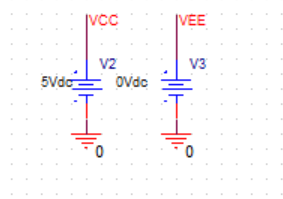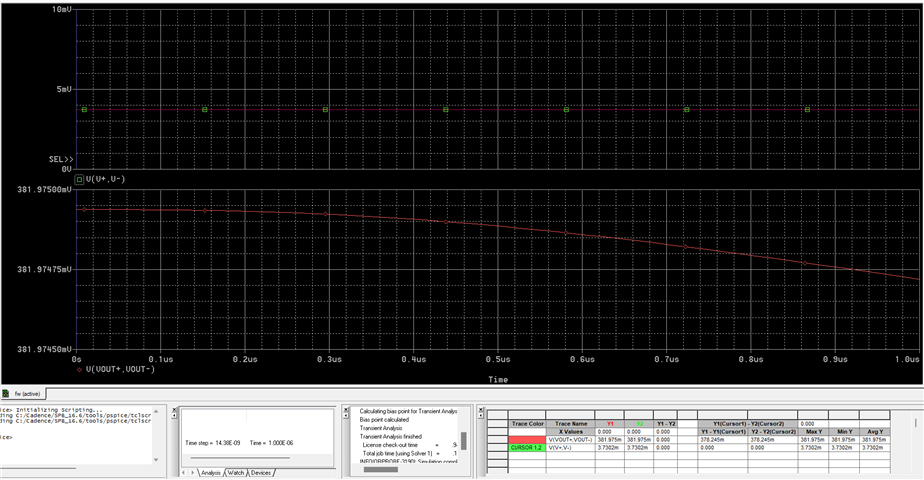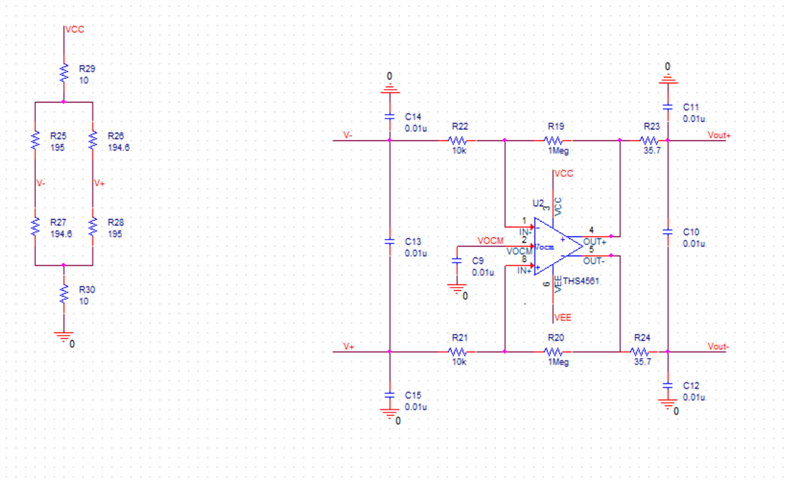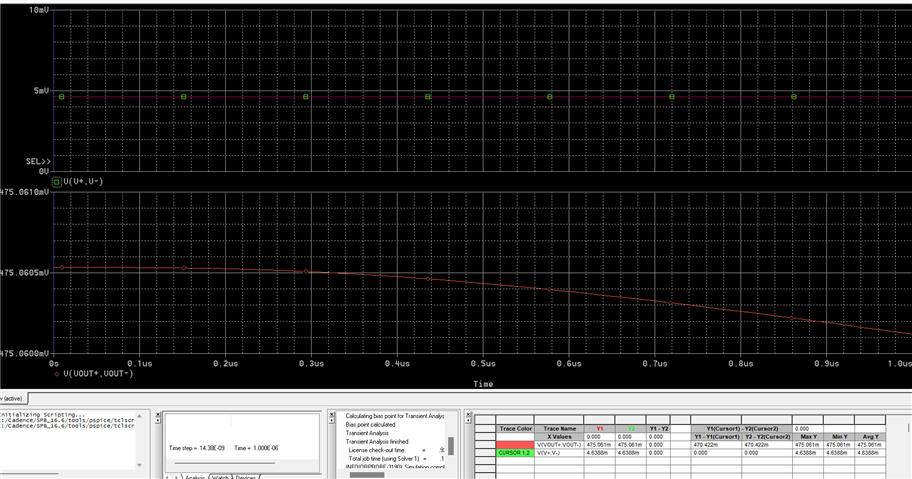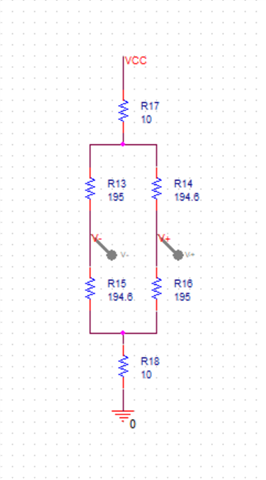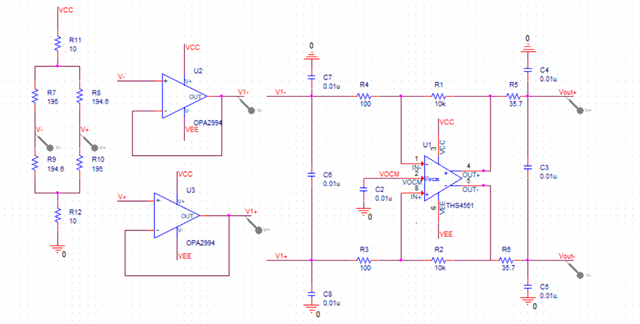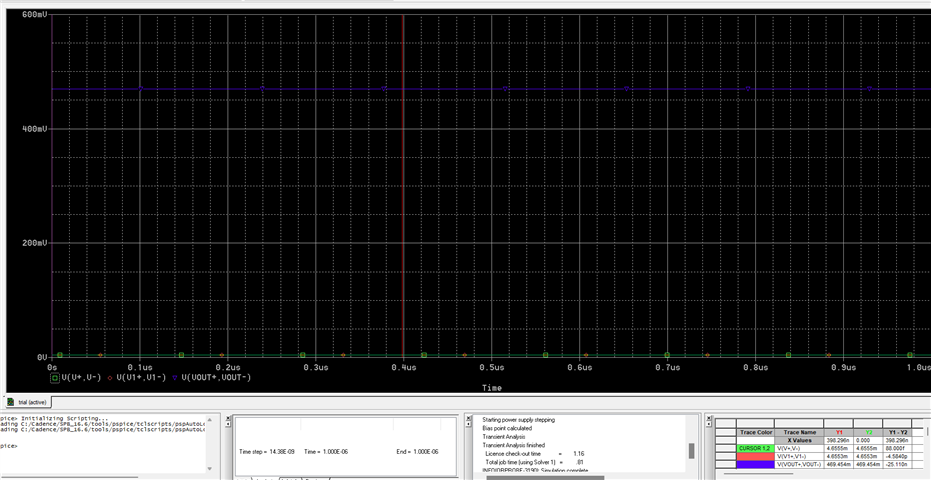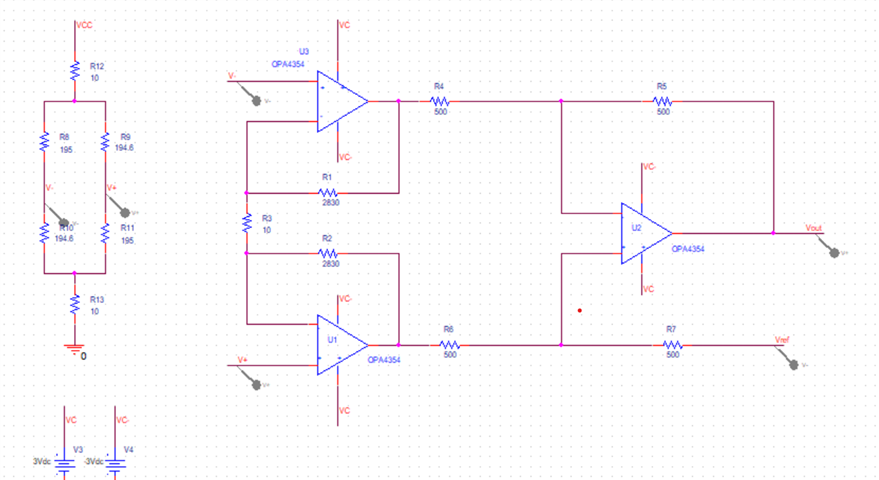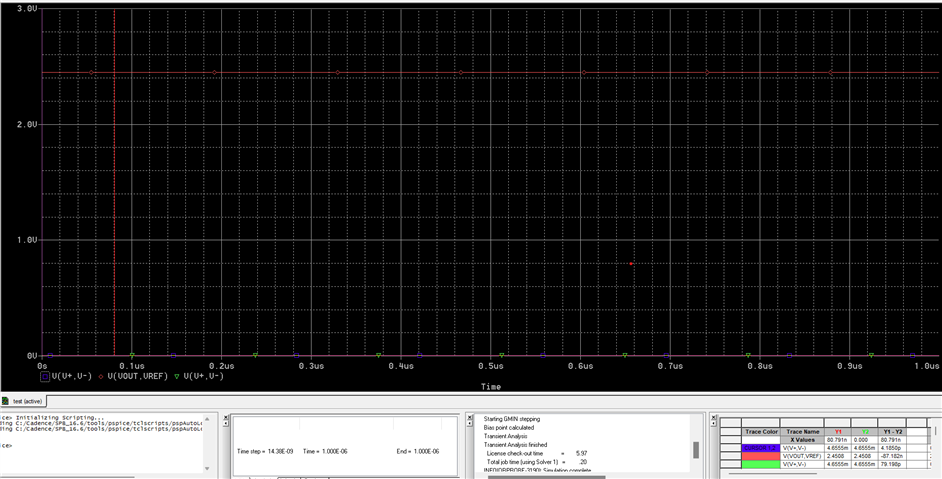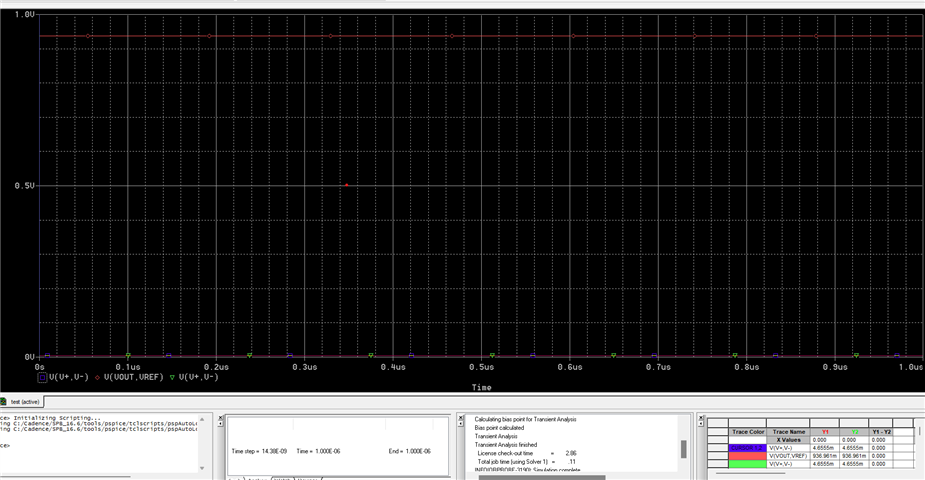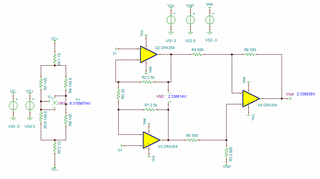Other Parts Discussed in Thread: LMP2011, OPA2994, LM7332, TLV2333, OPA4354, INA826, OPA2810
Hi team,
For our project we are using load cell. For amplifying the load cell output, the THS4561 amplifier circuit is used.
Refer the connection diagram given below,
Ri=100k and Rf=10Meg

Output waveform
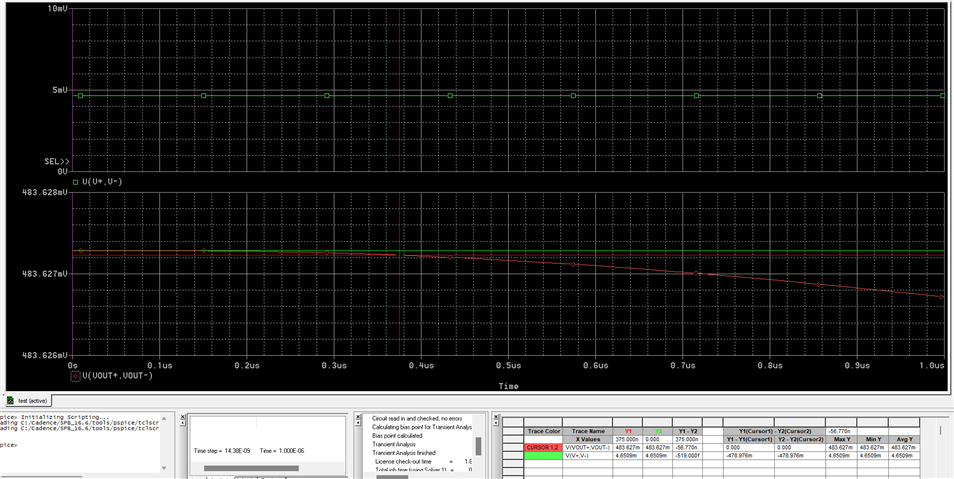
Theoretical:
Expected output = 4.65*100 = 465mV
Expected output = -4.65*100 = -465mV
Simulation outputs :
For positive input:
Diff Vi(V+ - V-) = 4.65mV
Diff Vout(Vout+ - Vout-) = 483mV
For negative input:
Diff Vi(V+ - V-) = -4.65mV
Diff Vout(Vout+ - Vout-) = -434mV
There is +18 mV and -31mV voltage difference between the expected output and simulation output.
Is this circuit correct or else what changes do I need to get the expected output?
Thanks.


